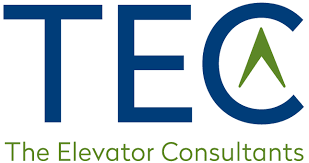As a building owner or property manager, you are responsible for the safety of your building’s tenants and visitors. A few of the many aspects of safety you need to be well-versed in are ASME A17.1 / CSA Handbook on Safety Code for Elevators and Escalators (ASME A17.1), Americans with Disabilities Act (ADA) Accessibility Guidance for Buildings and Facilities and numerous other code requirements to understand fully the compliance of your building. It is common for people to ask an elevator consultant about the code they need for their elevators.
Here are some important elevator standards for building owners:
ASME A17.1 – This is the primary safety code for the design, construction, installation, operation, inspection, testing, maintenance, alteration, and repair of elevators and escalators in the USA. It covers required safety features for vertical transportation, from maximum travel distances to equipment requirements, testing, and much more. This codebook should be in every building or within an organization with elevators. It is easily referenced, with information available immediately.
ADA Standards
The Americans with Disabilities Act sets requirements for elevators to ensure accessibility and conditions for the elevator to comply with standards like braille, door open times, door width, button height, size of buttons, and more. There are different requirements for different buildings based on the use of the building. New and existing buildings must follow; however, some elevators comply at installation time.
NFPA 101 Life Safety Code
This protects people in numerous areas and must be included when elevators are installed within a building. A building must comply with this requirement, from firefighter service to needed sprinklers and more. People may refer to their fire life safety company for other work that may tie into the elevator functionality that the building needs.
Local Codes
Most jurisdictions have adopted some version of ASME A17.1 and other rules and regulations that may go beyond the abovementioned codes. It is critical that the building knows what the principles are and the code year their equipment is under. The facility must adhere to this code. The facility should also be aware of special code requirements that are required and not in these books. The service provider may inform the structure of the new code requirement, but it is ultimately the responsibility of the building. Building owners need to check with the local authority.
Staying current with the latest edition of all applicable standards for an elevator, escalator, lift, etc., making alterations to your equipment, or installing a new elevator is best practice. A general knowledge ensures maximum safety, legal compliance, and quality for any building’s elevators. An establishment may have to bring in an elevator consultant, fire life safety consultant, or others to ensure they are fully compliant. If the building needs clarification, these experts can help.

